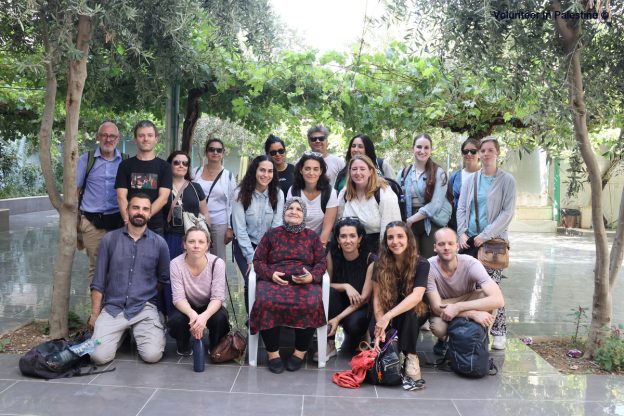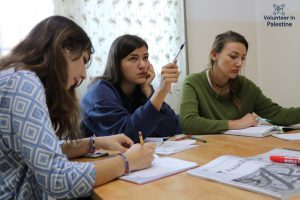Traveling to Palestine in 2025-2026: If someone suggested Palestine as a travel destination in 2025 or 2026, your first reaction might be ‘are you serious?’. While it might be off the beaten track for travellers, we’re here to tell you that Palestine is a wonderful place to come and spend time in.
Located in the Middle East Region, the occupied Palestinian Territories, including Gaza and the West Bank, are a small area bordered by Jordan, Lebanon, and Egypt and right next to the Mediterranean Sea. While Gaza is not open for foreign travelers, the West Bank is accessible to tourists who would like to come and experience the history, culture, and beauty of the region for themselves.
Apart from seeing a new part of the world, traveling to Palestine can also have an incredibly positive impact on the local community. Since October 2023, many Palestinians have faced unemployment and restrictions on their movement to seek more opportunities. Supporting the businesses that rely on tourism also supports local families to eat well, send their children to school, and access healthcare. Receiving foreigners also helps give a sense of global solidarity to the Palestinian cause, making them feel like they are not alone in their struggle.
There are many beautiful parts of the West Bank that you can (and should) visit as a tourist. This article will outline some tips and tricks for travelling well in Palestine.
Table of Contents
Entry Requirements & Travel Restrictions
The first thing to know about planning your travel to Palestine is that there is no separate visa to enter Palestine. As the territories are still under military occupation, you will need to get a tourist visa from Israel on arrival. These are generally granted for 90 days, but may be given for a shorter time if you specify how long you intend to stay. For example, if you say you’re planning to stay for two weeks, you may be granted a visa spanning only two weeks rather than the whole three months. As of January 1st, 2025, anyone travelling to Palestine needs to fill out an Electronic Travel Authorization form prior to departure.
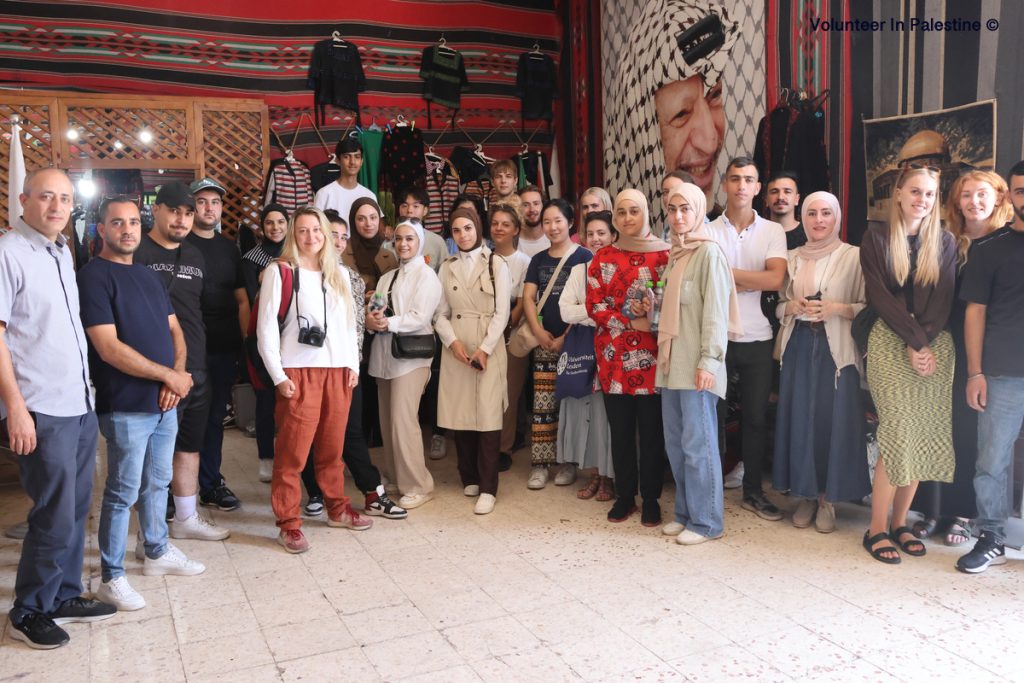
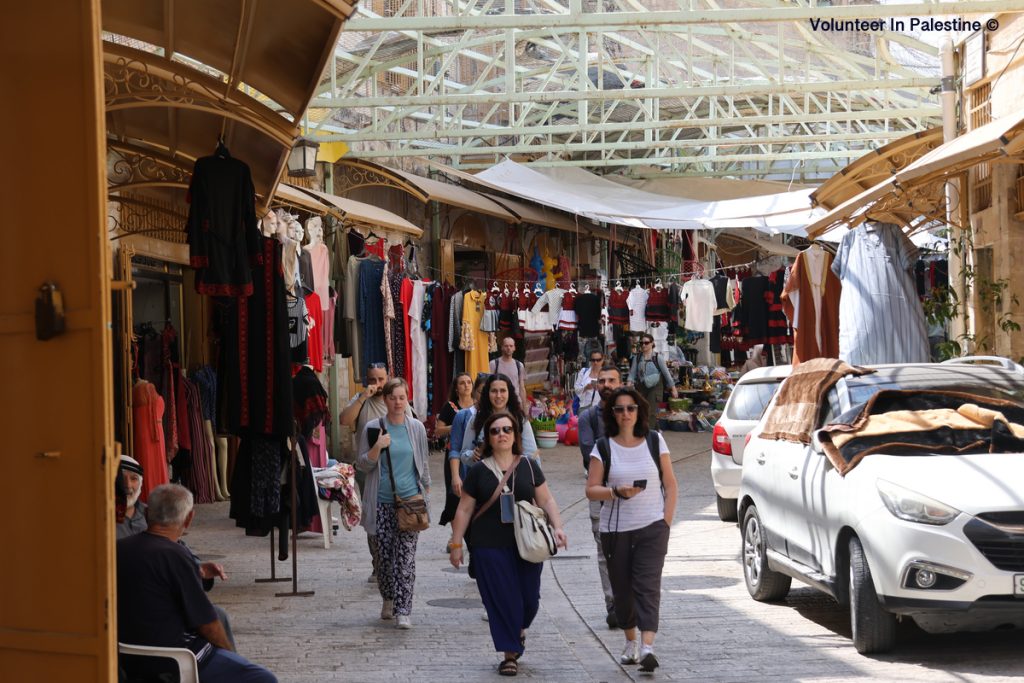
There are two main ways to enter Palestine, the first is through Israel’s Ben Gurion Airport. The second is via a land crossing from Jordan directly into the West Bank. Travel advice tends to change along with the security situation, but right now, we would recommend traveling overland from Jordan. You can read more about this route in our article about travel from Jordan to Palestine.
One thing to note about travelling to Palestine via Israeli security is that they don’t want any foreigners coming to support the Palestinian cause, so they may become suspicious and question you if you mention you are travelling to Palestine. In some cases, they may refuse entry. Our advice is to add travel in Israel to your itinerary, even just for the first day, and do not mention your intention to come to the West Bank.
Sounds complicated? Due to the current security situation, travel to Palestine is a little trickier than normal. However, we would still encourage people to try. If you have any questions or want some advice, don’t hesitate to reach out to us at Info@ecpalestine.org.
Top Destinations to Visit
Once you’re through security, it’s time to see Palestine! There are many beautiful places within the West Bank to see, and lots to do. Here’s our guide to where you should go:
Jerusalem: Al-Aqsa Mosque, Old City, religious and historical sites
The famous Jerusalem is just as impressive in real life as it is in the biblical stories. Featuring some of the holiest sites in the monotheistic religions, Jerusalem is home to Al Aqsa mosque (the third holiest in all of Islam), the Temple Mount, and the Church of the Holy Sepulchre (where it is said Jesus was crucified and resurrected). You can wander the streets of the Old City through the Muslim Quarter, the Christian Quarter, the Jewish Quarter, and the Armenian Quarter – just be careful to keep your feet on the worn and slippery stone pathways!
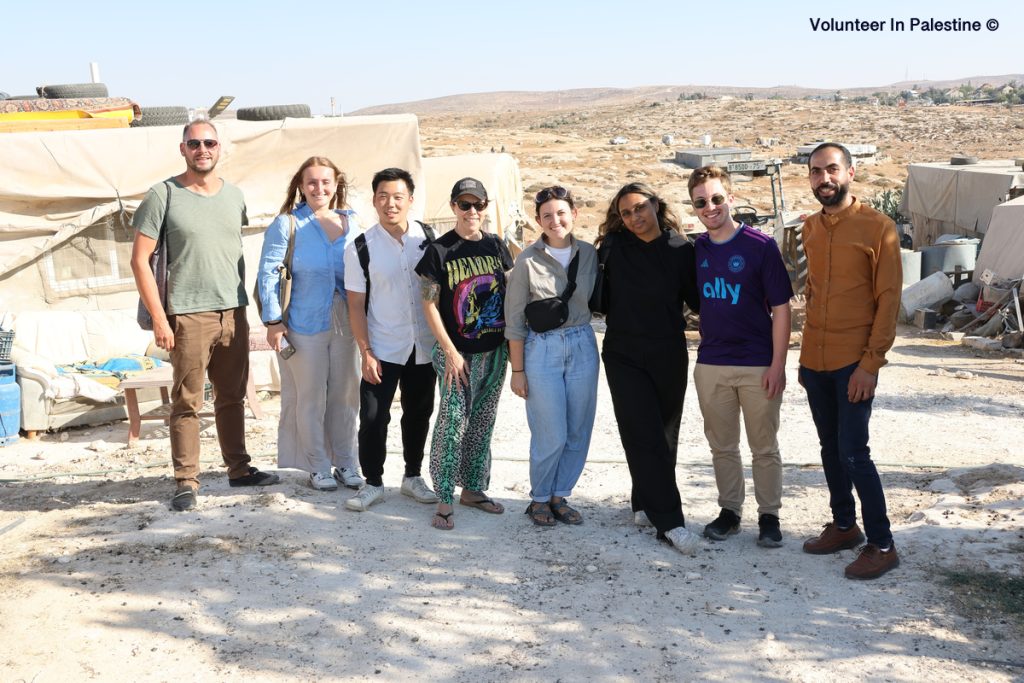
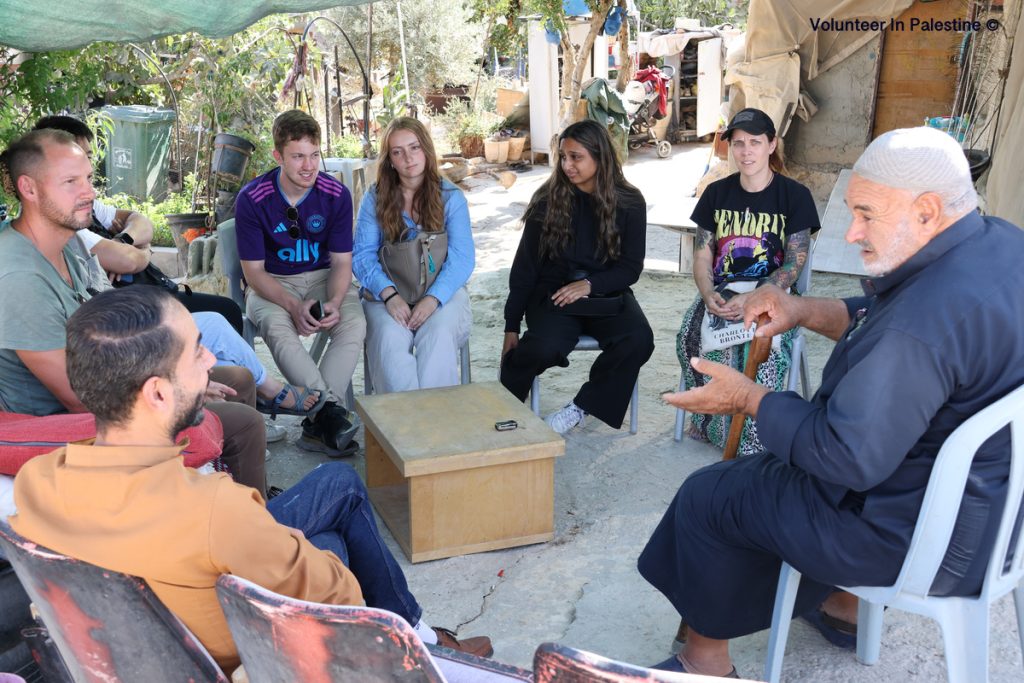
Bethlehem: Church of the Nativity, cultural attractions
The famous birthplace of Jesus Christ, Bethlehem, is a lovely city that mixes old and new almost seamlessly. A must-visit is the Church of the Nativity, said to be the birthplace of Jesus. For those into art, you can see the famous graffiti of the separation wall that runs through the city, featuring some pieces by the elusive Banksy. You can also buy beautiful locally made olive tree carvings, which are famous from this area.
Ramallah: Vibrant city life, museums, and nightlife
Located just north of Jerusalem, Ramallah is the cosmopolitan, political, and NGO center of Palestine. Less conservative than the south, foreigners can even visit bars and dance until the early hours in Ramallah’s vibrant nightlife. For a more cultural experience, you can find a museum dedicated to the legendary Palestinian poet, Mahmoud Darwish, or visit the tomb of Yasser Arafat.
Hebron: Old City, Ibrahimi Mosque, glass and ceramic factories
The economic heart of the West Bank, Hebron, is a sprawling southern city with a very friendly and local community feel. With its vibrant central streets and low cost, many people come to Hebron to shop on the weekends. Here, you can visit the old city, the holy Ibrahimi mosque, and see local industry at work through hand-blown glass craft and painted ceramics factories.
Nablus: Historic souks, Jacob’s Well, Sebastia ruins
About an hour and a half north of Ramallah, Nablus is a beautiful little city nestled among surrounding mountains. This place is famous for its old winding markets and its delicious kunefe (a decadent dessert made with soft cheese and sugar syrup). In Nablus, you can also see historically and religiously significant sites, like Jacob’s Well and the Sebastia Ruins, that date back 4000 years.
Jericho: Mount of Temptation, Hisham’s Palace, Dead Sea access
Located close to the Jordanian border crossing, Jericho is the lowest city on the planet. It features areas of biblical significance like the Mount of Temptation and is one of the earliest known human settlements. There is also a beautifully preserved palace from the Umayyad era in the 8th century, with stunning mosaics. Jericho is in close proximity to the Dead Sea, where you can go for a swim in water so densely salinated that your body will effortlessly float on its calm waters. But beware – don’t get any water in your eyes!
Transportation and Getting Around
Transportation options
It’s pretty easy and affordable to get around the West Bank. The main transportation option between cities is shared minivan taxis called Services (pronounced Servees). Services usually leave from one or two central locations in a city, and their drivers will stand in the street and yell out the destination they are heading to. Ask about the fare, and ensure you have rough cash to pay – Palestine is predominantly a cash economy.
Once you take your spot, you might have to wait for the rest of the seats to fill up before the driver departs. Sometimes, they offer the existing passengers the opportunity to pay for the extra seats in order to depart more quickly. Before the end of your trip, you will see people start to pass money to the front to pay for their fare.
Another option for transport in the West Bank is to rent a car. This is reasonably affordable compared to some Western countries.
If you also intend to travel through Israel, there are public buses, light rail options, and trains that you can take between Jerusalem and Tel Aviv, and up the coast to Haifa.

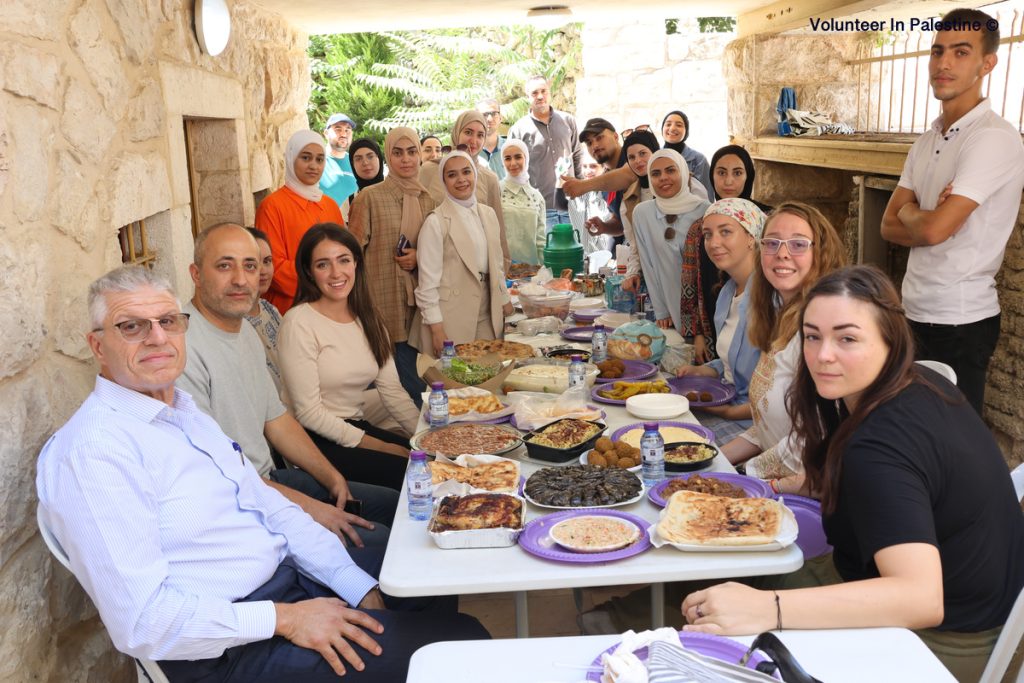
Challenges you might face
The West Bank is a small area, but it is under military occupation, where the restriction of Palestinian movement is a priority. As such, there are Israel-controlled checkpoints and gates set up as you navigate between cities across Palestinian-controlled Area A, Israel-controlled Area C, and the jointly controlled Area B. When travelling in Palestine, you may have to wait in traffic and go through ID checks by soldiers.
This is part of daily life in Palestine, and most people wear it with a smile. We recommend making sure you carry your passport and visa at all times, and being polite if you are asked any questions by soldiers.
Accommodation Options
There is a range of different accommodation options you can consider for your stay in Palestine, for people of all budgets and travel styles. Booking local accommodation options is a great way to support the community through business. Let’s look at a few places you might consider:
Budget stays: Most cities in the West Bank have at least one hostel, featuring dorm and private options. There are also some local guest houses that can be booked for a low rate. Here are some of our favourites:
- EcoHostel, Ramallah: This hostel has friendly vibes, great staff, and very comfortable beds.
- Traditional House with Amazing Verandah: A lovely old home in the heart of Bethlehem, spacious and with a lovely city view.
Mid-range hotels and boutique stays: These stays offer more comfort and privacy without breaking the bank. We recommend:
- New Capitol Hotel, Jerusalem: Located in East Jerusalem, this hotel is in a great location near the Old City. It is simple and friendly.
- Queen Plaza Hotel, Hebron: A nice and reliable hotel in the heart of Hebron, right on bustling Ein Sara Street. This hotel is a short walk to the Old City and other attractions.
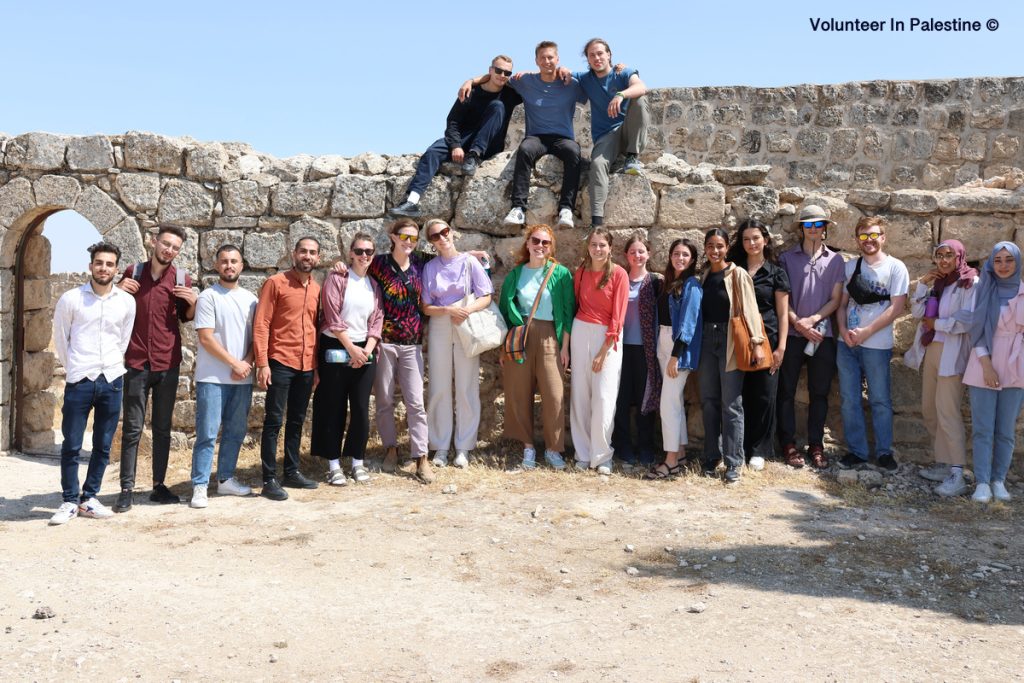
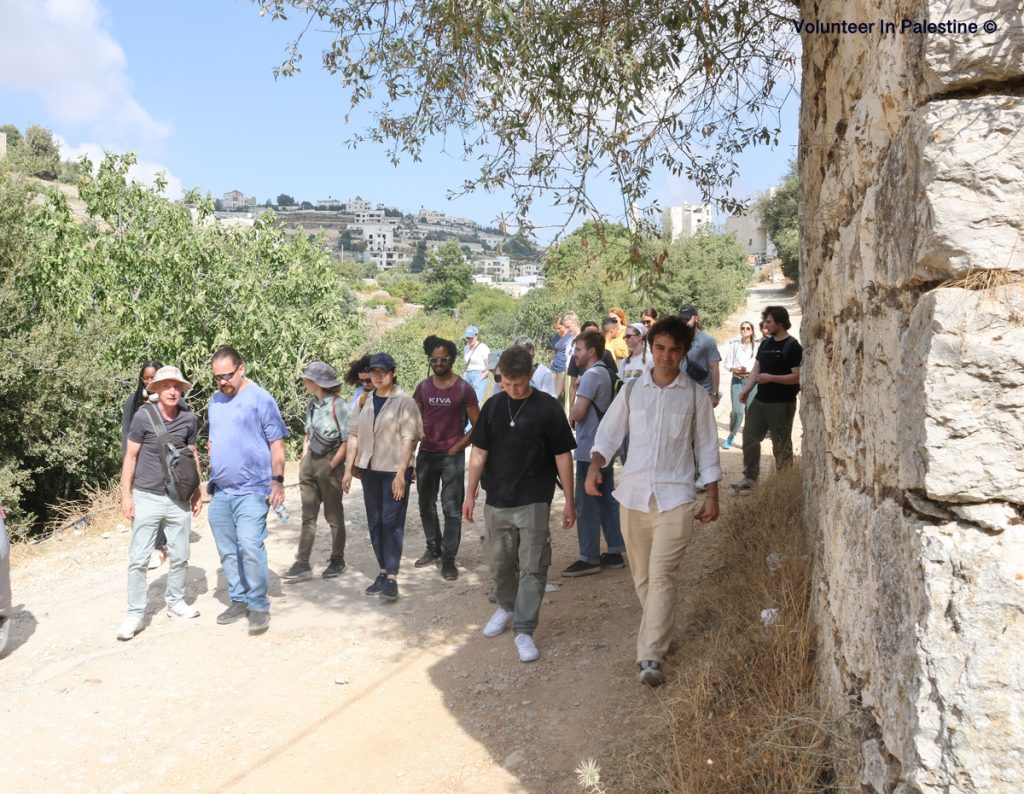
Luxury accommodations and unique stays: Pamper yourself with these higher-end stays. Some of the best hotels in the West Bank include:
- Reggenza Hotel Ramallah: With lovely rooms, full amenities, and a great view of the city, Reggenza is the best luxury option in Ramallah.
- The American Colony Hotel, Jerusalem: A small, boutique hotel situated in East Jerusalem, this decadent stay is close to the attractions of the Old City and the nightlife of West Jerusalem.
It’s important to note that some accommodations may not accept non-married couples or friends of the opposite sex staying in the same room together. Make sure you check this before you book, or book with a bigger and more well-known chain.
You may even be offered by friendly locals to stay at their home, which is a nice way to eat some home-cooked Palestinian food and to get to make some friends!
Safety, Politics, and Responsible Tourism
Travelling to Palestine is a fantastic experience that we highly recommend. It’s a beautiful, not often visited part of the world. However, it is a land under military occupation and facing a lot of hardship, so it is best to learn more about your destination before you depart.
- Understand the political landscape: Unsure what areas A, B, and C are? Wondering why most Palestinians aren’t allowed to travel to Jerusalem to pray at Al Aqsa mosque? You don’t need to be an expert in the long and complex history of the area, but some understanding of the current situation is recommended to ensure you truly understand the country you are travelling in.
- Safety tips: Seeing armed soldiers will be a regular occurrence, and as mentioned before in this article, there may be times when you have to show your ID at a checkpoint or answer questions about your travel. We recommend just staying calm, following the lead of the people around you, and answering any questions with a friendly smile.
- How to travel responsibly and support local communities: Responsible travel takes many forms. On one side, you can use a search engine to make sure you are supporting Palestinian-owned businesses, especially when travelling in Areas B and C. You can also spend your money on local Palestinian crafts and eat at Palestinian restaurants. This economic support is invaluable for many people whose income relies on tourism.
It is also important to ensure you do not engage with soldiers, police, or settlers in a confrontational way. No matter your feelings about the occupation, Palestinians are the experts in their own struggle. Foreigners making trouble will most likely mean Palestinians will bear the brunt. Make sure to check with your Palestinian friends before recording any tense interactions or taking photos of any military operations.
Best Times to Visit Palestine
When to visit?
Peak tourist seasons in Palestine are usually over the summer months of June, July, and August. Many people are on break from school or work, and use this time to travel. While travelling in the high season has a better vibe about it, travelling in the off-season has its benefits too! You are much more likely to find a great accommodation option, there is less traffic, and a lower wait time to see the sights. Hotels can generally be a bit cheaper in the off-season, too.
Weather?
In terms of weather, Palestine has a dry climate and quite distinct seasons. In the summer, temperatures can reach up to 40 degrees Celsius, but that is mostly in the desert areas of the south. Winters generally range between 5 and 15 degrees Celsius, but because of the lack of humidity, it can be very cold inside and in the shade. Make sure to bring your thermals, but you might also need sunscreen if it’s a clear day.
Conclusion
Our final recommendation? Come to Palestine! It is a beautiful place with friendly and welcoming people who will make you feel right at home. Despite the challenges that Palestinians face in their everyday lives, they continue to live in resilience and hope, which makes the land a vibrant place to be.
Looking for a place to base yourself while travelling in Palestine? Why not consider volunteering or studying Arabic at Engage in Palestine? It’s a great way to travel, get to know the country, as well as make a really positive impact on the community. For more information, see our programs on Engage in Palestine website, or reach out directly to Info@ecpalestine.org.
Contact Us
Should you have any questions, please do not hesitate to contact us at:
WhatsApp: +972 599 479 880
Website: https://ecpalestine.org/
EC Website: https://excellencenter.org/
Instagram: https://www.instagram.com/excellence.center
Facebook page: https://www.facebook.com/ExcellenceCenter
Tags: Is it safe to travel to Palestine 2026, Palestine travel tips for tourists, Tourism in Palestine 2025 travel info, Visit West Bank and Palestine 2025/2026
